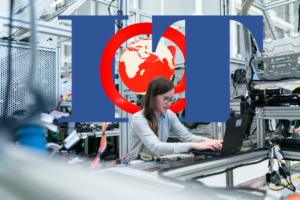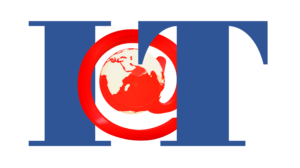The Internet of Things (IoT) is poised to connect billions of devices over the coming decades. This connectivity could potentially change how much of the world operates. At last fall’s Gartner Symposium/ITxpo in Orlando, the company’s analysts predicted, “By 2020, IoT technology will be in 95 percent of electronics for new product designs. … Once this technology emerges, buyers will rapidly gravitate to Internet of Things-capable products, and interest in and demand for IoT-enabled products will rapidly snowball. Every supplier must, at the very least, make plans to implement IoT technology into its products, for both consumer and business buyers.”[1] The biggest concern about the IoT is security. Gartner analysts predict, “Through 2022, half of all security budgets for IoT will go to fault remediation, recalls and safety failures rather than protection.” They explain, “Risks related to the introduction of IoT as part of projects or initiatives are substantially impacted by the unintended consequences presented when the ‘pervasive digital presence’ is introduced across all industries and market sectors as IoT growth expands. … The need to preserve safety for individuals, the environment and the rich regulatory regime that controls safety systems will ensure that the rapid expansion of use of IoT in those systems will result in regulatory impacts for securing those systems.”
Internet of Things Trends
1. IoT is moving from experimentation to business scale. Christopher Voce (@chrisvoce), a vice president and research director at Forrester Research, observes that the IoT is really an ecosystem of sensors, connectivity, and analysis. “The business impact of IoT that truly defines what it is,” he writes, “[primarily is the result of] the insights that you can derive with analytics and the business outcomes you can achieve.”[2] As sensors, connectivity, and analytics improve, the IoT comes closer to being able to scale as futurists imagine it will.
2. Use of intelligent agents is growing, wearables — not so much. Gil Press (@GilPress) explains, “The hype and growing adoption of intelligent agents like Amazon Alexa or Google Assistant in more and more devices will open marketers’ eyes to new ways of interacting with customers. Building more intimate brand experience, they will extend their mobile moment strategy to include new interfaces with smart home speakers or smartwatches. Despite incremental sales of more than 12 million smartwatches in the US alone by the end of 2018, Forrester expects wearable usage to remain a niche.”[3]
3. Enterprises are not prepared to analyze all of the data the IoT will generate. Kris Beevers (@beevek), co-founder and CEO of NS1, believes most enterprises won’t be ready for the oceans of data generated by the IoT. He states, “451 Group estimates there will be 10 billion IoT devices deployed by 2020. Yet today, IoT deployments are only collecting about half of the data captured by sensors, and are only analyzing about half of what is collected. As more technology processes become integrated with IoT, IT teams will be even more challenged to keep up with this data — not to mention the potential for serious disruption if these devices are not properly secured.”[4]
Internet of Things Predictions
1. IoT platform offerings will begin to specialize in “design” and “operate” scenarios. Voce explains, “Today, buyers looking for a platform to suit their specific IoT scenario face a broad landscape of platforms. … In 2018, expect platforms to specialize to suit the specific needs of their audiences whether creating new connected products or deploying a connected process.”
2. IoT security issues will remain a threat. Just like banks will always face the threat of bank robbers, connected databases will face the threat of hackers. Voce notes, “Security vulnerabilities are a significant worry for firms deploying IoT solutions — in fact, it’s the top concern of organizations looking at deploying IoT solutions. However, most firms don’t consistently mitigate IoT-specific security threats and business pressures overwhelm technology security concerns. In 2018, we’ll see more IoT-related attacks like the Mirai botnet that caused havoc — except they’ll grow bigger in scale and impact.”
3. New IoT architectures will bring IT and OT closer together. Brad Surak, Chief Product and Strategy Officer at Hitachi Vantara, writes, “As the IoT ecosystem continues to advance in 2018 — with things like edge devices getting smarter — IT and operational technology (OT) systems will move closer together. Additionally, hardware manufacturers will begin to embrace open data policies. Driven by the need to move to new service models and optimize their hardware devices, they will begin to partially open up their systems, which will have an impact on security. As such, we’ll start to see priorities shifting from data protection and access denial to securing system operations. Organizations that embrace these developments will become more IoT-enabled as they move up the IoT maturity model. Ultimately, despite these uncertain times, we may take solace in knowing that innovations in big data and IoT will continue to advance.”[5]
4. Storage and analytic schemes will change. Guy Churchward (@guychurchward), CEO of DataTorrent, predicts, “The traditional data lake will dry up.”[6] He explains, “The soaring population of devices on the IoT has created a dire need to scale out data pipelines in a cost-effective way. Big data and cloud ecosystems can no longer be limited to search indexing or data warehousing. They need to service the entire enterprise data flow, regardless if it’s generated by a person or a machine. And this needs to be done in real-time, since an enterprise that can perform real-time predictive analytics will gain an immense advantage over one that cannot. The implication here is that the data lake architecture that served companies so well through the data ‘at rest’ and ‘batch’ era has now become real-time data analytics’ Achilles heel. Parking data first and then analyzing it puts companies at a massive disadvantage. When it comes to gaining insights and taking action, businesses that rely on stale event data will be left in the dust. This is one area where ‘good enough’ will prove strategically fatal.”
5. IoT growth will increase demand for cognitive computing platforms. You can’t discuss the IoT separately from the ecosystem of which it is a part. As Voce noted, what makes the IoT disruptive are the insights and business applications drawn from analysis of IoT-generated data. Increasingly, that analysis will be conducted by cognitive computing platforms. Dmitry Budko, founder of Mediant LLC, explains, “Since there will be more smart devices and we will use IoT much more than we do now, the amount of processed data will grow too. So we will have to work with Big Data a lot and thus we will have to think of resources that would enable us to process and analyze it correctly. Here artificial intelligence and machine learning will come in handy because with these technologies we will be receiving more precise results and analytics in comparison to calculations performed by manpower.”[7]
Summary
Full-scale implementation of the Internet of Things is inevitable. When that will occur remains up in the air primarily due to security concerns. Sensors, connectivity, and cognitive computing platforms are all capable of operating at scale if security protocols and protections can be developed. There won’t be a single IoT network; rather, the IoT will be a network of networks. Those networks will primarily be dedicated to machine-to-machine communication. With the advent of intelligent agents and their increased use by consumers, the line between the IoT and the Internet (i.e., the World Wide Web) will continue to blur. Eventually, some analysts believe, there will be an Internet of Everything — which we may end up calling the Internet once again.
Footnotes
[1] David Weldon, “Top 10 predictions for IT in 2018 and beyond,” Information Management, 10 October 2017.
[2] Christopher Voce, “Predictions 2018: IoT will move from experimentation to business scale,” Information Management, 5 December 2017.
[3] Gil Press, “10 Predictions For The Internet Of Things (IoT) In 2018,” Forbes, 9 November 2017.
[4] Ian Barker, “Security concerns and a move to edge computing, 2018 predictions for the IoT,” BetaNews, 22 December 2017.
[5] Brad Surak, “The Evolution of Big Data and IoT Systems in 2018,” Pentaho Blog, 21 December 2017.
[6] Guy Churchward, “Predictions 2018: The IoT will drive app building innovations,” Information Management, 22 December 2017.
[7] Dmitry Budko, “The Most Promising Internet of Things trends for 2018,” Hackernoon, 7 November 2017.





